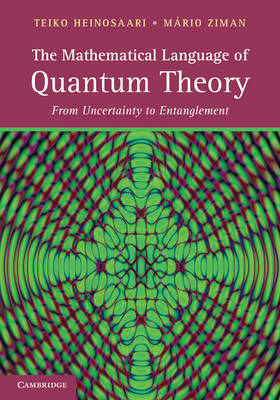: 2025
: 2024
: 2023
: 2022
: 2021
: 2020
: 2019
: 2018
: 2017
: 2016
: 2015
: 2014
: 2013
: 2012
: 2011
: 2010
: 2009
: 2008
: 2007
:
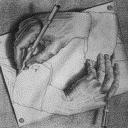 19.10.2009
19.10.2009
17th Nonlocal seminar will be held in Bratislava on 23.10.2009 Program: 13:00 Maria Anastasia Jivulescu (Timisoara): On the dynamics of the central spin model 13:50 Refreshment 14:10 Daniel Reitzner (Bratislava): Coexistence of qubit effects 15:00 Break 15:10 Marcus Huber (Wien) : Multidimesional multipartite unlockable bound entanglement |
 8.10.2009
8.10.2009
Quantum finite-depth memory channels: Case study by Tomáš Rybár and Mário Ziman We analyze the depth of the memory of quantum memory channels generated by a fixed unitary transformation describing the interaction between the principal system and internal degrees of freedom of the process device. We investigate the simplest case of a qubit memory channel with a two-level memory system. In particular, we explicitly characterize all interactions for which the memory depth is finite. We show that the memory effects are either infinite, or they disappear after at most two uses of the channel. Memory channels of finite depth can be to some extent controlled and manipulated by so-called reset sequences. We show that actions separated by the sequences of inputs of the length of the memory depth are independent and constitute memoryless channels. Published in Physical Review A |+++| |
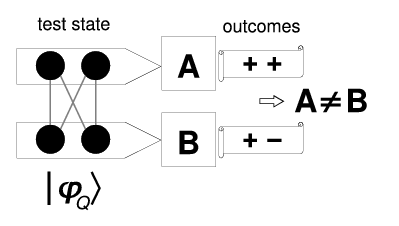 5.11.2009
5.11.2009
Unambiguous comparison of quantum measurements by Mário Ziman, Teiko Heinosaari and Michal Sedlák The goal of comparison is to reveal the difference of compared objects as fast and reliably as possible. In this paper we formulate and investigate the unambiguous comparison of unknown quantum measurements represented by nondegenerate sharp positive operator valued measures. We distinguish between measurement devices with a priori labeled and unlabeled outcomes. In both cases we can unambiguously conclude only that the measurements are different. For the labeled case it is sufficient to use each unknown measurement only once and the average conditional success probability decreases with the Hilbert space dimension as 1/d. If the outcomes of the apparatuses are not labeled, then the problem is more complicated. We analyze the case of two-dimensional Hilbert space. In this case single shot comparison is impossible and each measurement device must be used (at least) twice. The optimal test state in the two-shot scenario gives the average conditional success probability 4/9. Interestingly, the optimal experiment detects unambiguously the difference with nonvanishing probability for any pair of observables. Published in Physical Review A |+++| |
 17.6.2010
17.6.2010
Searching via walking: How to find a marked clique of a complete graph using quantum walks by Mark Hillery, Daniel Reitzner, and Vladimír Bužek We show how a quantum walk can be used to find a marked edge or a marked complete subgraph of a complete graph. We employ a version of a quantum walk, the scattering walk, which lends itself to experimental implementation. The edges are marked by adding elements to them that impart a specific phase shift to the particle as it enters or leaves the edge. If the complete graph has N vertices and the subgraph has K vertices, the particle becomes localized on the subgraph in O(N/K) steps. This leads to a quantum search that is quadratically faster than a corresponding classical search. We show how to implement the quantum walk using a quantum circuit and a quantum oracle, which allows us to specify the resources needed for a quantitative comparison of the efficiency of classical and quantum searches—the number of oracle calls. Published in Physical Review A |+++| |
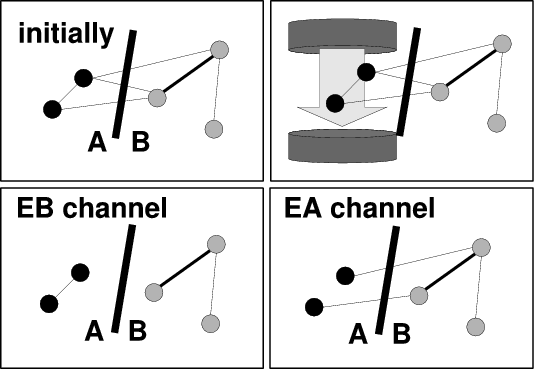 11.6.2010
11.6.2010
Entanglement-annihilating and entanglement-breaking channels by Lenka Moravčíková and Mário Ziman We introduce and investigate a family of entanglement-annihilating channels. These channels are capable of destroying any quantum entanglement within the system they act on. We show that they are not necessarily entanglement breaking. In order to achieve this result we analyze the subset of locally entanglement-annihilating channels. In this case, the same local noise applied on each subsystem individually is less entanglement annihilating (with respect to multi-partite entanglement) as the number of subsystems is increasing. Therefore, the bipartite case provides restrictions on the set of local entanglement-annihilating channels for the multipartite case. The introduced concepts are illustrated on the family of single-qubit depolarizing channels. Published in Journal of Physics A |+++| |
 2.6.2010
2.6.2010
Fast universal quantum computation with railroad-switch local Hamiltonians by Daniel Nagaj We present two universal models of quantum computation with a time-independent, frustration-free Hamiltonian. The first construction uses 3-local (qubit) projectors and the second one requires only 2-local qubit-qutrit projectors. We build on Feynman’s Hamiltonian computer idea [ R. Feynman, Optics News 11, 11 (1985) ] and use a railroad-switch-type clock register. The resources required to simulate a quantum circuit with L gates in this model are O(L) small-dimensional quantum systems (qubits or qutrits), a time-independent Hamiltonian composed of O(L) local, constant norm, projector terms, the possibility to prepare computational basis product states, a running time O(L log2 L), and the possibility to measure a few qubits in the computational basis. Our models also give a simplified proof of the universality of 3-local adiabatic quantum computation. Published in Journal of Mathematical Physics |+++| |
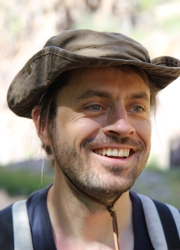 30.10.2009
30.10.2009Dr. Peter Staňo has (temporarily) left the group. He took postdoc position at University of Arizona, Tuscon, USA. |
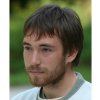 22.10.2009
22.10.2009
PhD defense of Michal Sedlák 22.10.2009 Michal Sedlák successfully defended his dissertation entitled Quantum theory of unambiguous measurements. Congratulations! |
 6.10.2009
6.10.2009
Nobel Prize in Physics The Nobel Prize in Physics goes to Charles K. Kao "for groundbreaking achievements concerning the transmission of light in fibers for optical communication" and to Willard S. Boyle and George E. Smith "for the invention of an imaging semiconductor circuit – the CCD sensor". read more |
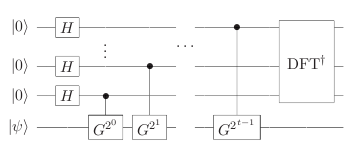 2.9.2009
2.9.2009
Quantum algorithm for approximating partition functions by Pawel Wocjan, Chen-Fu Chiang, Daniel Nagaj, and Anura Abeyesinghe We present a quantum algorithm based on classical fully polynomial randomized approximation schemes (FPRASs) for estimating partition functions that combine simulated annealing with the Monte Carlo Markov chain method and use nonadaptive cooling schedules. We achieve a twofold polynomial improvement in time complexity: a quadratic reduction with respect to the spectral gap of the underlying Markov chains and a quadratic reduction with respect to the parameter characterizing the desired accuracy of the estimate output by the FPRAS. Both reductions are intimately related and cannot be achieved separately. First, we use Grover's fixed-point search, quantum walks, and phase estimation to efficiently prepare approximate coherent encodings of stationary distributions of the Markov chains. The speed up we obtain in this way is due to the quadratic relation between the spectral and phase gaps of classical and quantum walks. The second speed up with respect to accuracy comes from generalized quantum counting used instead of classical sampling to estimate expected values of quantum observables. Published in Physical Review A |+++| |
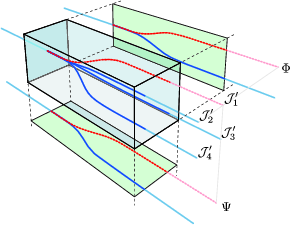 20.8.2009
20.8.2009
Coexistence of quantum operations by Teiko Heinosaari, Daniel Reitzner, Peter Staňo and Daniel Reitzner Quantum operations are used to describe the observed probability distributions and conditional states of the measured system. In this paper, we address the problem of their joint measurability (coexistence). We derive two equivalent coexistence criteria. The two most common classes of operations—Lüders operations and conditional state preparators—are analyzed. It is shown that Lüders operations are coexistent only under very restrictive conditions, when the associated effects are either proportional to each other or disjoint. Published in Journal of Physics A |+++| |
 1.8.2009
1.8.2009
Quantum machines by Mark Hillery and Vladimír Bužek In this paper we discuss quantum information processing machines. We start with single purpose machines that either redistribute quantum information or identify quantum states. We then move on to machines that can perform a number of functions, with the function they perform being determined by a program, which is itself a quantum state. Examples of both deterministic and probabilistic programmable machines are given, and we conclude with a discussion of the utility of quantum programs. Published in Contemporary Physics |+++| |
 23.6.2009
23.6.2009
16th Nonlocal seminar will be held in Vienna University on 1.7.2009 since 10:00. The program includes talks by M. Ziman (RCQI, Bratislava): A framework for process tomography experiments S. Sponar (ATI, Wien): Berry phase in entangled systems: a neutron interferometer experiment K. Temme (Uni, Wien): Matrix Product States for stochastic processes |
 9.6.2009
9.6.2009
Unambiguous coherent state identification II: Multiple resources by Michal Sedlák, Mário Ziman, Vladimír Bužek and Mark Hillery We analyze unambiguous identification of coherent states of an electromagnetic field. In particular, we study possible generalizations of an optical setup proposed in Sedlák et al. [Phys. Rev. A 76, 022326 (2007)]. We show how the unambiguous identification of coherent states can be performed in a general case when multiple copies of unknown and reference states are available. Under the condition that the experimental setup consists only of linear optical elements and photodetectors, we prove the optimality of the setup. We also investigate whether reference states after the measurement can be “recovered” and further used for subsequent unambiguous identification tasks. We show that in spite of the fact that the recovered reference states are disturbed by measurements, they can be repeatedly used for unambiguous identifications. We analyze the influence of particular type of noise in the preparation of the unknown and the reference coherent states on the performance of our unambiguous-identification setup. Published in Physical Review A |+++| |
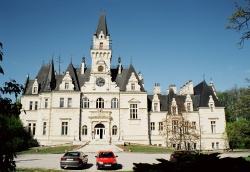 1.6.2009
1.6.2009
V4 School on Quantum Theory The school will take place in Budmerice chateaux from 21.-27.9.2009.It consists of series of 5 lectures on quantum measurements, quantum optics, quantum statistics, quantum cryptography and quantum dots. Limited number of supports for participants from Visegrad Four countries is available. For more information visit the website http://www.quniverse.sk/conf/v4school/ |
 29.1.2009
29.1.2009
CEQIP 2009 5th Central European Quantum Information Processing Workshop will take place in Jindrichuv Hradec from 1.-4.6.2009. All interested participants are encouraged to apply and join the informal athmosphere of this workshop. More information on http://www.quniverse.org/ceqip/ |
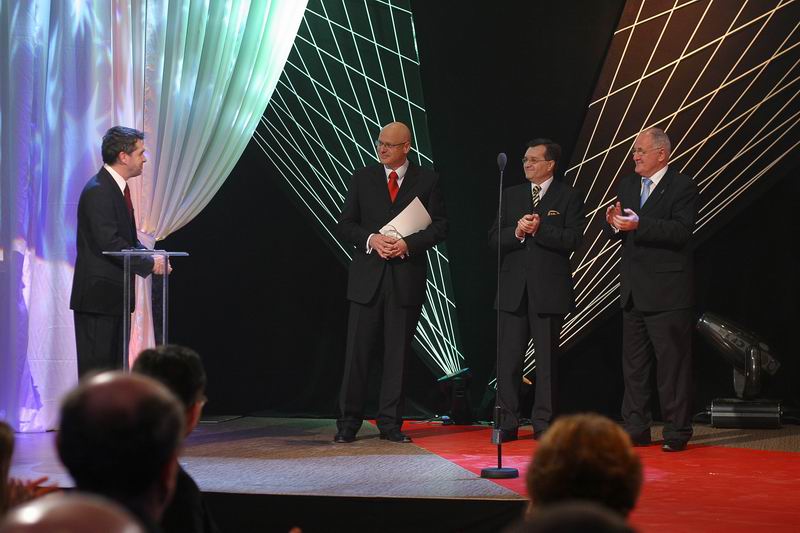 29.1.2009
29.1.2009
Hlava roka 2008 Prof. Vladimír Bužek was awarded a prestiguous Prize "Hlava roka 2008" for his work on universal quantum programmable processors. Congratulations! |
 26.1.2009
26.1.2009
Quantum searches on highly symmetric graphs by Daniel Reitzner, Mark Hillery, Edgar Feldman, Vladimir Buzek We study scattering quantum walks on highly symmetric graphs and use the walks to solve search problems on these graphs. The particle making the walk resides on the edges of the graph, and at each time step scatters at the vertices. All of the vertices have the same scattering properties except for a subset of special vertices. The object of the search is to find a special vertex. A quantum circuit implementation of these walks is presented in which the set of special vertices is specified by a quantum oracle. We consider the complete graph, a complete bipartite graph, and an M-partite graph. In all cases, the dimension of the Hilbert space in which the time evolution of the walk takes place is small (between three and six), so the walks can be completely analyzed analytically. Such dimensional reduction is due to the fact that these graphs have large automorphism groups. We find the usual quadratic quantum speedups in all cases considered. Published in Physical Review A |+++| |
 8.1.2009
8.1.2009
Unambiguous comparison of unitary channels by Michal Sedlák and Mário Ziman We address the problem of an unambiguous comparison of a pair of unknown qudit unitary channels. Using the framework of process positive operator valued measures we characterize all solutions and identify the optimal ones. We prove that the entanglement is the key ingredient in designing the optimal experiment for comparison of unitary channels. Without entanglement the optimality cannot be achieved. The proposed scheme is also experimentally feasible. Published in Physical review A |+++| |


